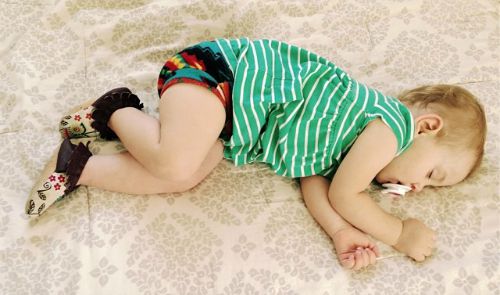By Guest Blogger Dr. Meggan Hartman, PhD
One of the more popular questions at my workshops and from my clients is: do babies and toddlers need naps and how do we get our children to nap? The answer is: absolutely yes they do needs naps, and tips are outlined below!
Numerous studies are now showing how naps impact learning, behavior, and day to day functioning. To begin with naps help babies learn. As a baby naps, the information that they acquired while playing is actively being moved from short term memory into long term memory. This process creates a clean slate for new information to come in. It also helps with learning retention.
Second, naps actually help the baby sleep better at night. This is related to the release of the hormone cortisol. When babies do not nap, the brain releases cortisol and it helps the baby “catch their second wind.” The problem comes when it is time to sleep at night and the cortisol is still in the body. It makes the baby a little “wired” and they do not sleep as well. Naps also aid in preventing baby and toddler behavioral issues. Having your baby sleep during the day can help elevate the late afternoon tantrums and meltdowns.
Throughout the first 18 months of a child’s life, naps are consolidating and moving around throughout the day. In the first days and weeks, babies can take anywhere from five to seven naps a day. These naps can range from 20 minutes long to two/three hour stretches at a time. Typically there is no rhyme or reason to their nap schedule. Around 3-4 months, the first predictable morning nap starts to emerge. This nap happens between 1 1/2 to 2 1/2 hours after wake time. At this age they can have 3-4 naps a day.
By 18 months, most toddlers are down to 1 nap a day. In helping a little one with their nap schedule, there are two things to consider. Each baby has their own daily rhythm and watching the clock can help parents learn their baby’s rhythm. To start learning about your baby’s schedule, when your baby has been awake for about 1 1/5 hours, start watching your baby for signs of tiredness. This will help you learn what their sleep window is. Typically for babies 4-6 months, these windows for sleeping occur ever 90-120 minutes. Typical signs of tiredness are:
• eye rub
• ear rub
• ear pulling
• gaze aversion
• yawning – the sleep window is closing
• crying – missed the sleep window
Here are some additional pointers to help encourage your baby’s nap time schedule:
• A 5-10 min pre-nap ritual is very helpful with winding down the baby for naps. This should be a shortened bedtime routine, think bedtime routine no bath.
• Up until the age of 8 months babies will vary their length of nap. Roughly half of their naps will be 20-40 mins long and the rest will be an hour or more. As an example: a 2-4 month old baby will take 4 to 5 naps. Of those 4-5 naps, 2 or 3 of them will be 20-40 mins long. A 6-8 month baby will have 2-3 naps. One of those naps will be 20-40 mins long. So letting those shorter naps happen is fine.
• Start introducing nap training for the first one or two naps of the day. If there are remaining naps – they can be shorter and taken on the go.
• Try to catch your baby’s sleep windows by paying attention to their sleep cues.
• Shoot for 70% of naps being stationary and on their own sleeping surface, and 30% of naps can be on the go.
Naps are the hardest sleep patterns for babies to learn, so stick with a plan/schedule for a couple of weeks. If you are finding a lot of resistance to learning naps, particularly with babies four months and younger, they may not be developmentally ready to learn how to nap. Put the process on hold for a couple of weeks, then you can try again.

















I am due in November so these tips came at just the right time. Bookmarking this page!